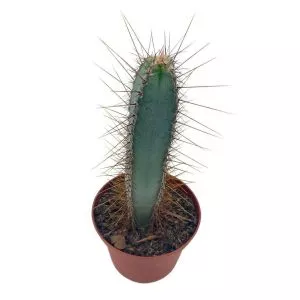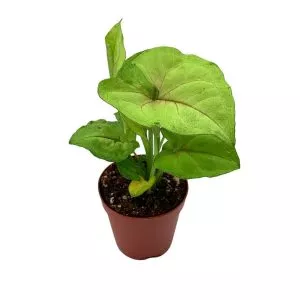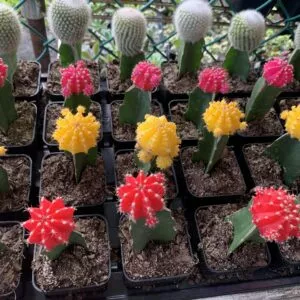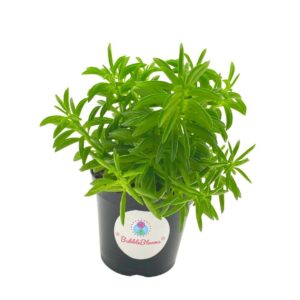No products in the cart.
Table of Contents
Yes, summer is heating up in many parts of the world, and vegetable gardeners are eager and cannot wait for the first tomato crop to ripen.
You need not head out to the shop to buy your favorite fruit as they are sun-warmed and sweet. But it is not always that way, as many things can go wrong with a crop.
Some you can fix, and others you can’t. Among such is providing enough fertilizer. Good news: we have all the info on the best fertilizing routine available here.
The Best Way to Fertilize Tomatoes
Your tomato plants are standing in the vegetable garden, looking great. But what more can you do to make them thrive? An important thing to remember is that tomato plants are heavy feeders.
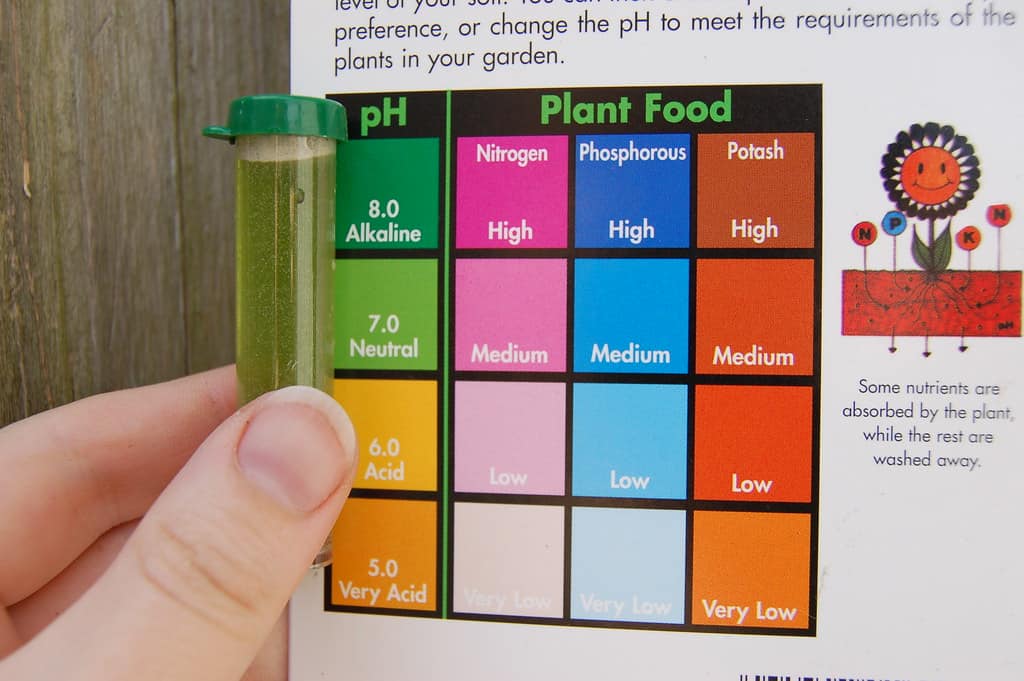
The truth is when you fertilize tomatoes, you need a balanced fertilizer made up of a lot of macronutrients and essential micronutrients such as:
Nitrogen for the continuous growth of the vine
Potassium for continued growth makes it susceptible to diseases
Phosphorous for root and fruit development and helps fight stress
Magnesium helps keep the plant green
Boron helps with the flowering and ripening of the fruit
Calcium for leaf and root growth to produce firm tomatoes
Zinc to help with the flowering and development of the fruit
When you fertilize tomatoes, all these nutrients must be present in varying proportions during each growth cycle.
If you’re new to gardening, feeding your outdoor plants might be daunting, whether growing from seeds or seedlings. It need not be.
With the guidance provided here, you will have a fantastic tomato crop year after year. But before we proceed, let’s get one thing clear.
There is no such thing as one single tomato fertilizer working in all gardens throughout the year. So, let’s start looking at some facts and plant food options to pick the right one based on your plant’s growth stage.
What does this mean by the nitrogen-phosphorus and potassium ratio?
Basic Fertilizer for Tomatoes

When choosing a plant feed for your tomatoes, it all depends on their growth stage. In contrast, every nutrient needs to be present at all times. The ratio changes with each step of the tomato’s development. Further, most tomato plant roots are not deeper than 7 inches.
So remember this when you mix your plant feed into the soil.
Lastly, commercial fertilizer always has a number series known as the ratio of 10-8-10. This stands for nitrogen-phosphorus-potassium or N-P-K. What this means is that the plant fee contains:
- 10% nitrogen
- 8% phosphorous
- 10% potassium
- The rest of the ratio is made up of filler material or micronutrients.
Growing Tomatoes Nutrient Needs
All plants need access to all macronutrients and micronutrients for them to live.
For macronutrients, tomatoes need an ample amount of phosphorous for root growth. Potassium helps the plant flower, while nitrogen is required for general development.
Phosphorous is required in the initial and final stages while nitrogen takes care of the foliage, but too much can lead to a bushy plant with no fruit. Potassium will help the container plant grow to produce flowers and fruits.
Fertilizing Tomato Plants in Different Stages

Depending on whether you plant from seeds or seedlings, there are different stages when it comes to fertilizing tomatoes, as seen here:
When planting seeds, they do not need added nutrients to germinate. The reason is that it already contains the amounts to start with growing the first leaves. Here is an excellent guide on how to plant tomato seeds.
If you plant from seedlings, they need plant food as it has already germinated. The plants grow fast before flowering and typically bear fruit within four months.
Once your plant is full-grown, it also needs fertilization, which depends on different factors, such as the soil, environment, and the type of tomato you have.
Importance of Tomato Plant’s Roots
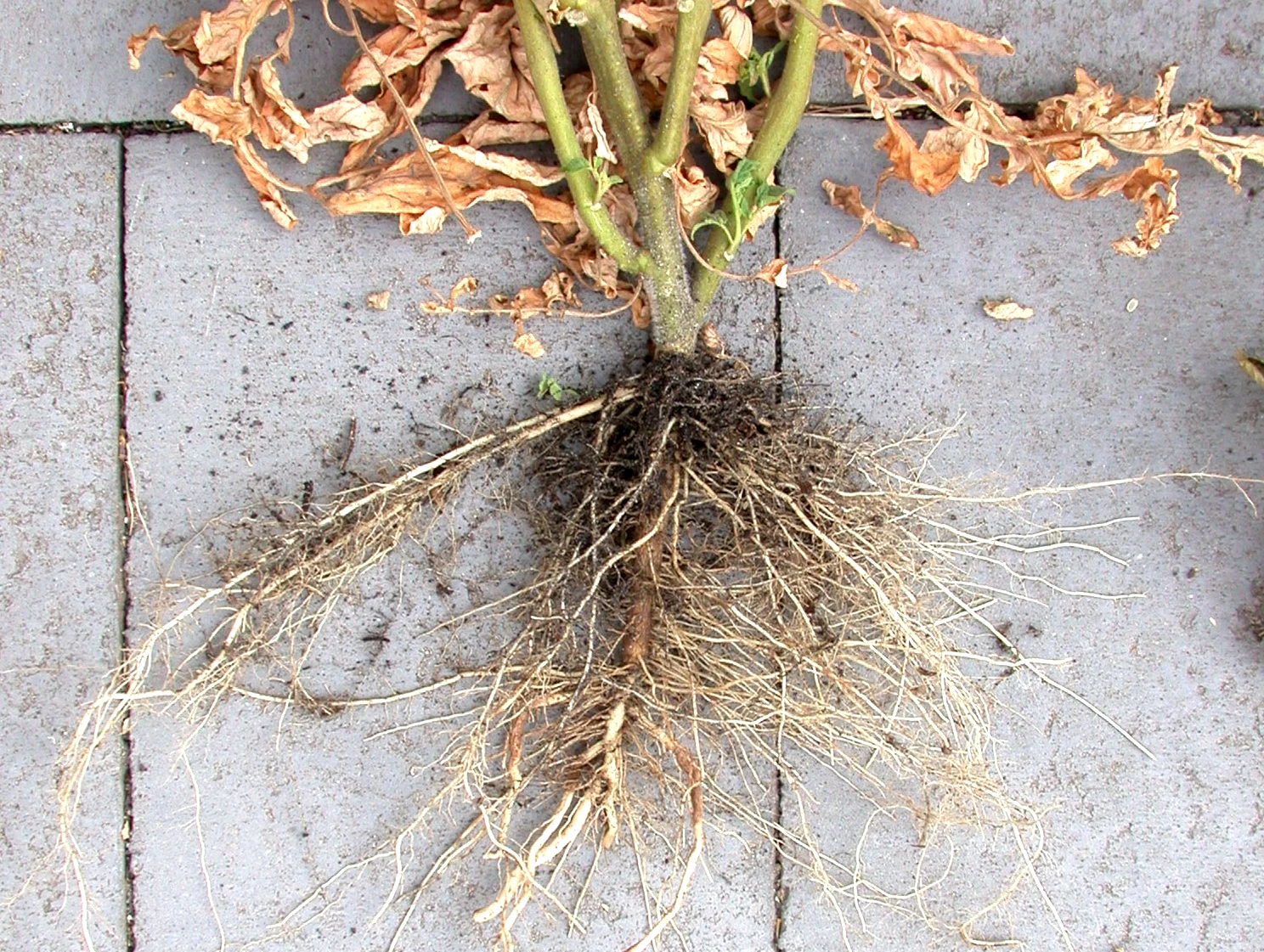
Another important thing is the root system of the plant. Your choice of plant feed all comes down to how the plant absorbs the nutrients placed into the soil.
Using the correct watering techniques to encourage deep rooting for the best root health before adding fertilizer would be best. You will have healthy plants, and your tomatoes will thrive for the best harvest.
As the plant grows in height and branches out, you may need to provide them with some support to prevent them from falling over. On another important note, placing your plant in a planting hole or a big container is best to avoid clumping the roots.
The reason is that clumped roots cannot absorb all the nutrients it needs to grow.
When Should You Fertilize Tomato Plants?
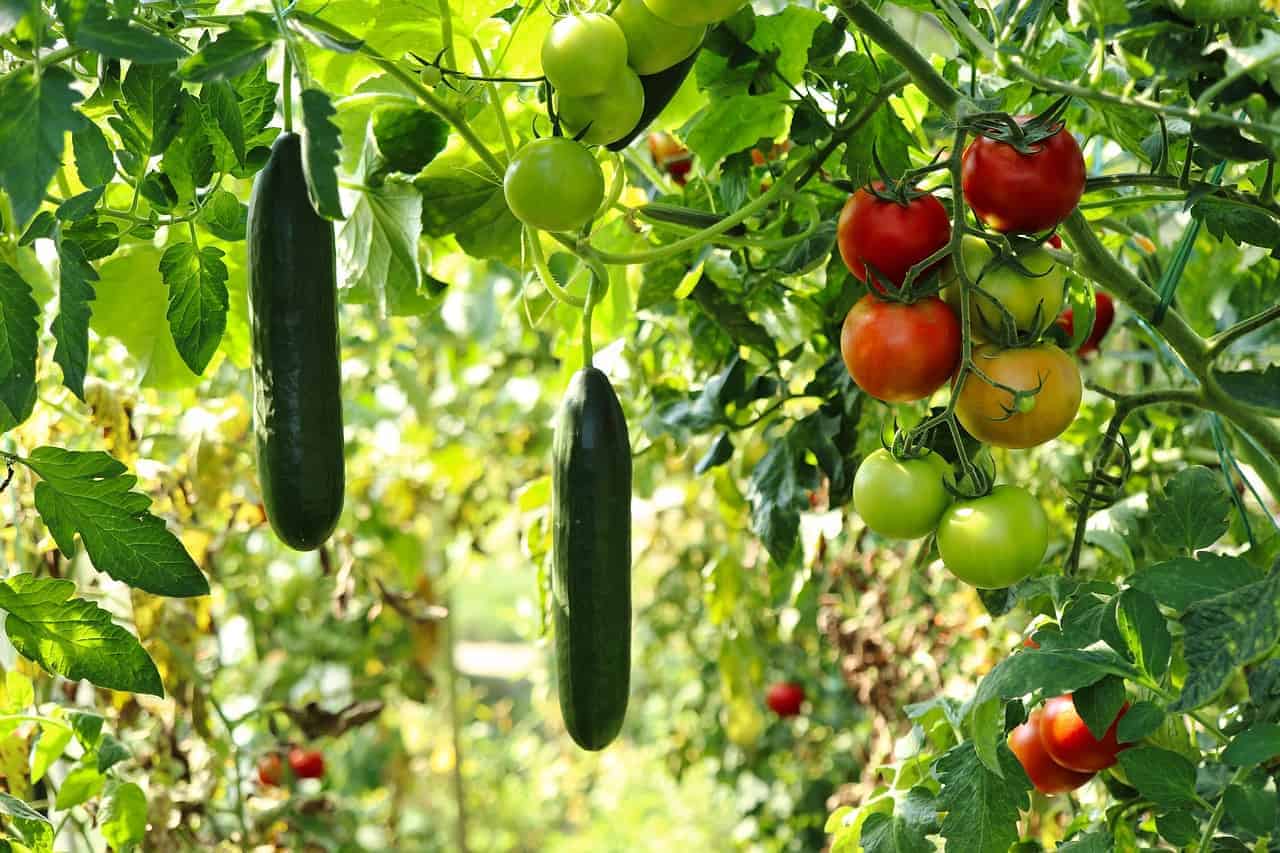
As mentioned, in the early stages, you need not fertilize seeds but will require a fertilizer application when planting seedlings and tomatoes grown into mature plants. You do not want to provide too many nutrients at the wrong time. You may not end up with a bumper crop.
Fertilizing Seedlings
When planting or transplanting seedlings, it needs excess nitrogen to grow. Generally, fertile soil filled with well-rotted manure has enough nitrogen to provide growth for your plant.
But, if you use large portions of coconut husk with a filler material, it needs more nitrogen and fertilizer. The only way to know if you need to add fertilizer to tomatoes is to do a soil test to keep plants healthy.
Nonetheless, the general rule of thumb is if you use fresh manure, there is no need for a nutrient boost. You may need to add phosphorus at the first growing stage. Do this soon after transplanting seedlings.
Still, you need not add phosphorus if you have added bones and banana peels.
The two methods of adding phosphorus are to use a combination of organic fertilizer spikes and bone meal.
Using Bone Meal
Bone meal is one of the best fertilizers for tomatoes that is organic. It provides your plants with enough phosphorous to grow a robust root system. The plant feed comprises ground animal bones such as beef or fish bones.
You find most of the commercial bone meal in ratios of 3-15-0.
Before you add the plant feed, it helps to check the pH level of your soil. If it is above 7, reduce the pH before adding the fertilizer. The plant feed is a slow-release fertilizer and can take up to four months to break down.
So, for 10 square feet, you only need to apply one pound of bone meal. Ensure that you apply it at the base of the plant when providing it as an additional fertilizer.
Using Fertilizer Spikes
You can also place a fertilizer spike about six inches away from the stem of each tomato plant, allowing it to absorb the nutrients from the soil. The best is to choose one with a high amount of phosphorous, potassium, and nitrogen.
The plant feed can last up to two months.
Fertilizing Tomato Plants to Pre-Flowering
Here, we look at both determinate and indeterminate plants. You can cater to determine tomato plants’ nutrition needs as there is a distinction between the growth phase and fruiting. But for indeterminate kinds, it needs constant plant feed using fertilizers of 8-32-16 or 6-24-24.
So, the nitrogen content comprises 1/4 of phosphorous with at least 1/2 of potassium.

At this stage, tomato plants need nitrogen for pre-flowering as it determines the varieties to form a structure like chlorophyll to aid photosynthesis.
But if you have good compost, you do not add nitrogen as too much nitrogen will lead to vigorous growth and not fruit heavily. Still, if you notice the leaves turning yellow, the plant needs nitrogen.
Further, if you want a lot of flowers, you need a constant nitrogen source, but not too much. Just before flowering until the end of the season, it also helps to add potassium.
The levels should be double the nitrogen, such as 8-32-16 or 6-24-24, and add per instructions. Or you can make some compost tea using chopped banana peels and bury them in the soil.
Then, during the plant’s growth, you can keep collecting and placing them in a big container to cover them up. Next, you can push the peels close to the roots about an inch below the soil or deeper.
Fertilizer For Tomatoes Flowering to Ripen Fruit
If grown well, your tomato plant does not need large amounts of nitrogen during this phase. A crucial nutrient to add is phosphorous for good fruit. The same applies to adding potassium, but only once a week. You can use an 8-32-16 plant feed for the best fertilizer during this stage.
Once you determine how long your plant takes to flower, you can feed them up to two weeks before that time.
Benefits of Homemade Tomato Fertilizer
Compared to commercially bought fertilizers, using organic plant feed has many benefits. The ingredients are naturally occurring plant or mineral matter added. Meanwhile, the petroleum industry chemically synthesizes inorganic fertilizers. Here are the benefits of both:

Organic
- The plant feed improves the soil as the organic matter contains trace nutrients instead of only the top three nutrients: nitrogen, phosphorous, and potassium.
- The nutrients are released gradually and last longer.
- You can find them available in a liquid form such as fish emulsion and a granular form.
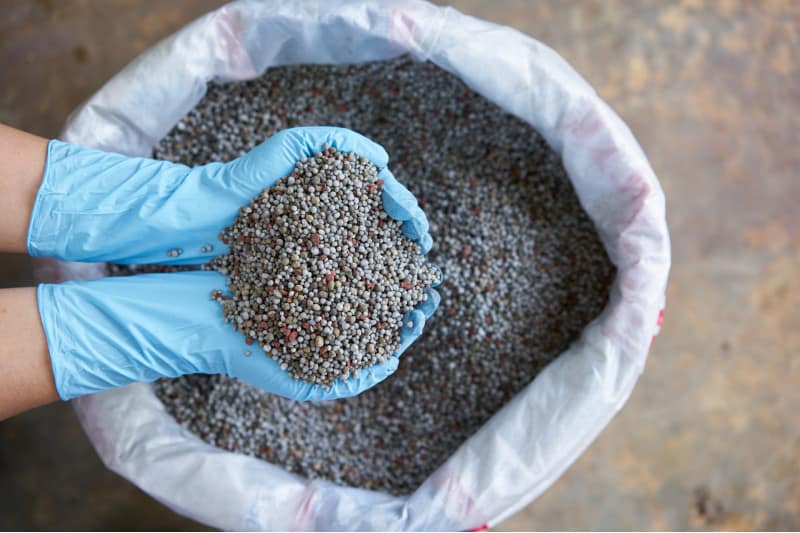
Inorganic
The nutrients are released fast to get a better timely result which is helpful with tomato plants that have yellowed leaves or if the plant is malnourished.
You can find granular and liquid tomato fertilizers.
-
$14.99Sold By: BubbleBlooms
In stock
Blue Column Cactus
Rated 4.81 out of 5 based on 279 customer ratings00Sold By: BubbleBlooms -
$6.99Sold By: BubbleBlooms
In stock
Syngonium Cream Allusion in 2 inch pot, well rooted live starter house plant
Rated 4.81 out of 5 based on 279 customer ratings00Sold By: BubbleBlooms -
$9.95Sold By: CTS Air Plants
In stock
Dracaena Tornado Houseplant
Only 8 available and it’s in 3 people’s basketSold By: CTS Air Plants -
Free Shipping$44.99Sold By: Aloha Hawaii Orchids
In stock
Live Paphiopedilum Niveum x Sib (hshyng x tan san) Rare Plant 4″
Rated 4.65 out of 5 based on 268 customer ratings00Sold By: Aloha Hawaii Orchids
Best Tomato Fertilizer
To grow delicious tomatoes, you must provide the best fertilizer for your plants. Using plant food will help support the overall health of your tomato plant. It will help with growth, flowering, and fruit development and make it disease-resistant.
But before we get to check out some of our top contenders, make sure to read this section first:
Types of Plant Food for Tomato Plants
You get three primary forms of plant food:
- Granular fertilizer applies easily and needs no preparation time. You can incorporate it into the soil before planting or spread it over the root system on established plants. You can buy them in quick and slow-release formulas. In addition, you can find them in organic and inorganic formulations.
- Liquid plant food has a concentrated formula you need to dilute using water. You can find them in organic and inorganic formulations. You can apply half-strength or less directly to the foliage or use the standard application method to drench the soil around your plant.
- Water-soluble fertilizers are a liquid form and provide immediate nutrients with an application. These are also available in organic and inorganic formulas. In addition, you can find them available in a micro granule or powdered form to dissolve in water.
Our Top Homemade Fertilizers
Okay, before you think of adding the best tomato fertilizer bought at the store, ensure to do the following:
Amend the beds before planting with animal manure like chicken or cow.
Then add some worm castings retrieved from your vermicomposter or bought online. This tomato fertilizer is loaded to give a nutrient boost your plants need. Alternatively, you can add eggshells by grinding them into a powder to blend in with the soil. It provides calcium to protect your tomatoes against blossom end rot.
Ensure the planting hole and soil has good drainage.
Next, start with the base of the plant in the planting hole using a blend of animal manure with coconut coir. Now, place the compost blend in a bucket to break it up and combine. Add two cups of vermicompost, two cups of powdered eggshells, and some rabbit to hamster droppings.
Next, add some wood ashes or use a bone or kelp meal. Then, add two cups of coffee grounds or use alfalfa pellets as a slow-release fertilizer. Add some water to the pellets before adding to the mix. You can also replace the coffee grounds with a blood meal.
Leave your dry fertilizers to cure in a closed bucket for a month.
Still, you can also make liquid fertilizers that are organic fertilizers making tea.
Mix a pound of your homemade tomato fertilizer with a gallon of half the water and mix it well daily for a few days.
Close the lid and protect the bucket from extreme heat or cold.
Leave the tea to steep for up to five days and strain it to use in an undiluted form.
You can add the solid parts to a compost pile or sprinkle them around the base of your plants.
Final Thought
Plant and soil nutrition is vital if you want plump, juicy tomatoes. It would be best if you fertilized healthy tomatoes, and the best ones support plant, flower, and fruit development. Further, it makes your tomato plants resistant to diseases.
We hope that the information on tomato fertilizers here helps you to choose one that suits your needs.
Frequently Asked Questions
You can use Epsom salt spray as a foliar spray late in the growing season as a water-soluble fertilizer for tomatoes. It will help to increase tomato yields and provide healthy growth.
Use horse manure combined with wood shavings or straw in the bedding for a nutrient-rich fertilizer application. Furthermore, you will need to add some mulch. If the compost has a lot of urine, you can work the manure directly into the soil.
We recommend deep water with less frequent intervals, so give your plants a deep watering once or twice a week depending on the climate, whether very hot or not.
For increasing the tomato plants’ fruit, you need to use a combination of organic matter with a high potassium content.
Tomato plants require nutrient-rich soil to grow, and best to avoid synthetic fertilizers with high nitrogen, phosphorus, and potassium content. Instead, use a homemade fertilizer application that is rich in potassium.
Once the baby tomatoes reach a mature size of 1/4 inch, you can feed them organic fertilizers every other week. Use a dry fertilizer as a side dressing, and if you use a liquid fertilizer, apply it weekly to the roots and foliage.
Whether you want to buy, sell, or simply reach out to other plant enthusiasts, Plantly is the right place to be!
-
$29.99Sold By: BubbleBlooms
In stock
Grafted Moon Cactus / Ruby Ball Cactus Set of 4 different colors
Rated 4.81 out of 5 based on 279 customer ratings00Sold By: BubbleBlooms -
$59.99Sold By: BubbleBlooms
$69.99In stock
Carnivorous Plant Set, Venus Fly Trap Assortment, Rotundifolia, Live Potted premium collection, in 2 inch pots, windowsill plants, gift
Only 993 available and it’s in 3 people’s basketRated 4.81 out of 5 based on 279 customer ratings00Sold By: BubbleBlooms -
$14.99Sold By: BubbleBlooms
In stock
Taco Plant / Peperomia axillaris / Happy Bean / Peperomia ferreyrae Yunck / philodendron selloum, horsehead philodendron, tree philodendron
Rated 4.81 out of 5 based on 279 customer ratings00Sold By: BubbleBlooms -
$15.99Sold By: BubbleBlooms
In stock
Philodendron Micans Hederaceum, 4 inch, Heart-Leaf Philo, Sweetheart Plant
Only 987 available and it’s in 3 people’s basketRated 4.81 out of 5 based on 279 customer ratings00Sold By: BubbleBlooms
